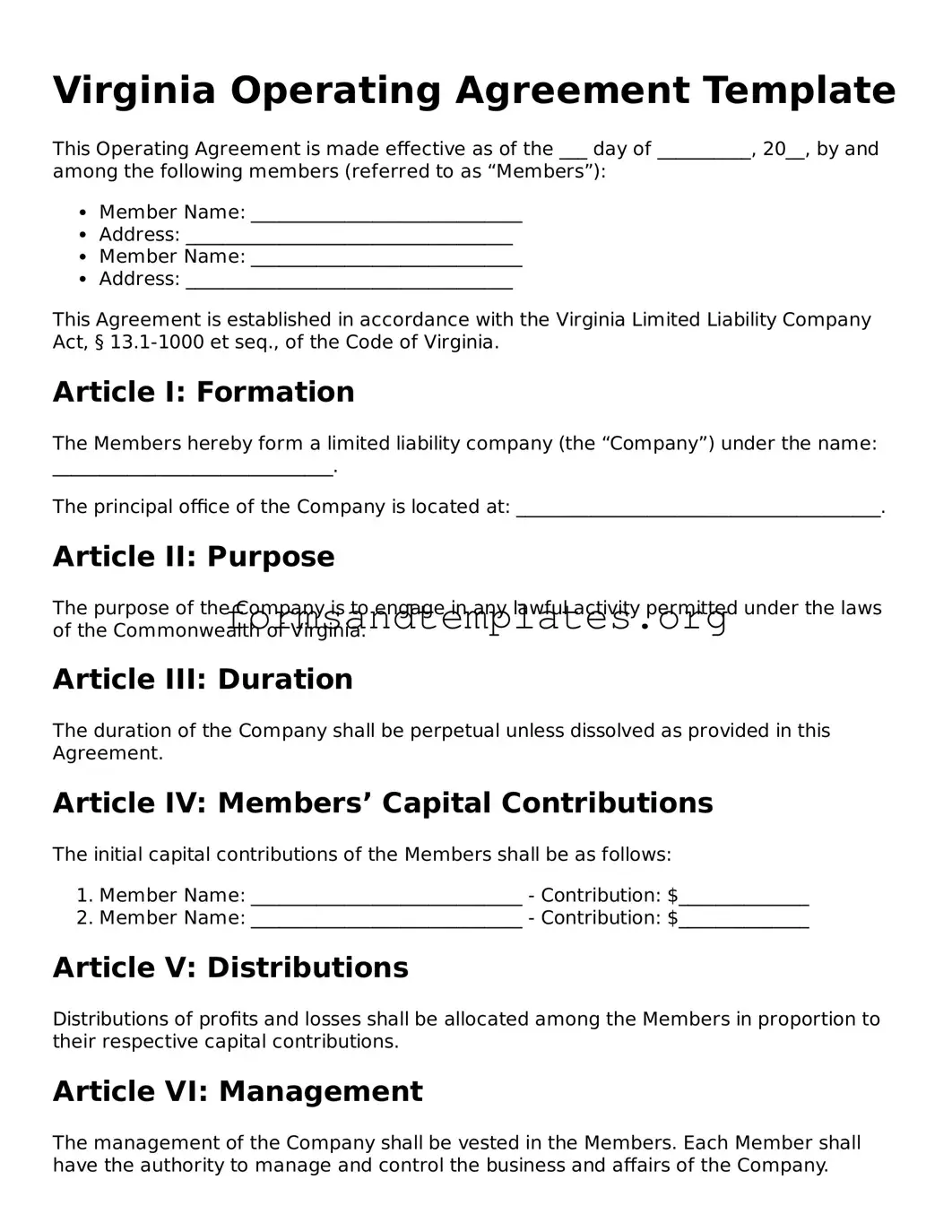Virginia Operating Agreement Template
This Operating Agreement is made effective as of the ___ day of __________, 20__, by and among the following members (referred to as “Members”):
- Member Name: _____________________________
- Address: ___________________________________
- Member Name: _____________________________
- Address: ___________________________________
This Agreement is established in accordance with the Virginia Limited Liability Company Act, § 13.1-1000 et seq., of the Code of Virginia.
Article I: Formation
The Members hereby form a limited liability company (the “Company”) under the name: ______________________________.
The principal office of the Company is located at: _______________________________________.
Article II: Purpose
The purpose of the Company is to engage in any lawful activity permitted under the laws of the Commonwealth of Virginia.
Article III: Duration
The duration of the Company shall be perpetual unless dissolved as provided in this Agreement.
Article IV: Members’ Capital Contributions
The initial capital contributions of the Members shall be as follows:
- Member Name: _____________________________ - Contribution: $______________
- Member Name: _____________________________ - Contribution: $______________
Article V: Distributions
Distributions of profits and losses shall be allocated among the Members in proportion to their respective capital contributions.
Article VI: Management
The management of the Company shall be vested in the Members. Each Member shall have the authority to manage and control the business and affairs of the Company.
Article VII: Indemnification
The Company shall indemnify any Member or former Member to the fullest extent permitted by law against any losses, expenses, or liabilities incurred in connection with the Company.
Article VIII: Amendments
This Agreement may be amended only by a written instrument executed by all Members.
Article IX: Governing Law
This Agreement shall be governed by and construed in accordance with the laws of the Commonwealth of Virginia.
IN WITNESS WHEREOF, the undersigned Members have executed this Operating Agreement as of the date first above written.
__________________________ Member Signature
__________________________ Member Signature
